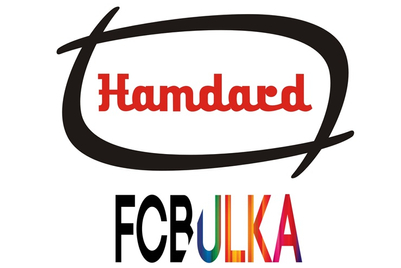.jpg&h=570&w=855&q=100&v=20250320&c=1)
In a blistering summer marked by soaring temperatures and even sharper rhetoric, Baba Ramdev, co-founder of wellness brand Patanjali Ayurved, ignited controversy with a marketing pitch that quickly spiralled beyond advertising. In a promotional video for Patanjali’s rose sharbat, Ramdev accused Hamdard Foods’ Rooh Afza of engaging in ‘sharbat jihad’ (beverage holy war), alleging that proceeds from the brand were used to “support mosques.” He went on to contrast this with Patanjali’s plans to fund Gurukuls and Patanjali University through sales of its products.
The video drew swift legal rebuke. The Delhi High Court condemned the statements as “indefensible,” ordering Patanjali to remove the content and related social media posts. Meanwhile, Rooh Afza maintained silence throughout the episode, a move widely interpreted as a display of brand maturity rather than passivity. Shark Tank India judge and Emcure Pharmaceuticals’ executive director Namita Thapar called Rooh Afza’s response — or lack thereof — a “class act.”
Hate marketing vs a class act. What is the India we want to create for our kids ? pic.twitter.com/FJfwhOvKec
— Namita (@namitathapar) April 21, 2025
This incident has reignited the debate around shock marketing, a tactic that thrives on controversy and disruption but often courts reputational risk. In today’s hypersensitive, hyper-connected landscape, the question for marketers is no longer whether they can provoke, but whether they should.

Drawing ethical boundaries
“India has seen brands like Amul, Zomato, Fevicol, and PepsiCo master the art of sharp, witty, and competitive advertising without ever tipping into divisiveness,” noted Sushant Sadamate, co-founder, Buzzlab. “The mantra is simple: the smartest ads don’t shout; they strike a chord. They win attention without alienation.”
According to Sadamate, ethical guardrails aren’t optional in today’s media environment; they are essential to brand longevity. Campaigns need to provoke thought without mocking identities or beliefs. “The question shouldn’t be ‘can we say this,’ but ‘should we say this’ and ‘what does it say about us?’” he added.
Brand equity, experts assert, is held not by the company alone, but by the public. And in India, a pluralistic society, that public includes a cross-section of religion, caste, gender, and class. Disregarding this diversity can dilute, if not damage, a brand’s resonance.
Legacy over loudness
Rooh Afza’s silence in the face of Ramdev’s incendiary comments was seen by many as a strategic decision rather than a missed opportunity. Industry observers argue that the brand’s century-old legacy gave it the confidence to refrain from reactionary responses.

“Legacy branding isn’t just about nostalgia. It’s about credibility, trust, and knowing when not to play the game,” said Ravikant Banka, founder and managing director, Eggfirst Advertising. “Rooh Afza’s silence should not be construed as meekness; rather it speaks of its maturity.”
Legacy, as a brand asset, is rooted in cultural relevance and consistency over decades. In Rooh Afza’s case, this included generations of consumer loyalty that rendered it immune to short-term provocations. The brand’s response—or lack thereof—was a calculated reminder of its long-standing place in Indian households.
The perils of founder-led messaging
Founder-led branding can offer unparalleled authenticity, but it can also veer into unchecked territory, according to Sadamate. “When a founder serves as the face, voice, and primary filter for all communication, agencies often become reactive instead of advisory,” he said.
This dynamic was evident in Patanjali’s situation. The promotional content wasn’t vetted through traditional advertising channels but delivered directly by its co-founder. This blurred the line between personal opinion and brand messaging.
“It’s crucial to distinguish between a founder’s personality and a brand’s identity,” added Harish Bijoor, founder of Harish Bijoor Consults Inc. “A brand’s persona should be designed to appeal to its target audience, rather than reflecting the founder’s personality.”
For agencies, this presents a unique challenge: to remain authentic to the founder’s voice while acting as ethical gatekeepers. In founder-led brands, spontaneous declarations can sidestep strategy, introducing risks that structured teams are designed to avoid.
Social media: Amplifier or arsonist?
Social media magnifies everything. A poorly judged message can escalate into a full-blown controversy within hours, far faster than traditional PR can contain it. And once the audience has taken over the narrative, original intent often becomes irrelevant.

“Social media does not separate the agency from the brand—it sees one voice, one face,” said Sadamate. Agencies, therefore, are not just creators; they are also crisis managers. And in moments of volatility, they are the first line of defence.
This blurring of boundaries places a greater onus on agencies to push back against risky ideas, even if they originate from the top. In a world where virality can come at the cost of credibility, the best agencies balance attention with accountability.
Shock tactics: Provocation with purpose
Not all provocation is problematic. As Bijoor pointed out, “With so much competition, every brand is striving to stand out, some at any cost. But the real question is not whether you stand out, but what you stand on.” Shock marketing, when done thoughtfully, can create conversations that matter. Campaigns like Ariel’s #ShareTheLoad or Tanishq’s interfaith wedding ad challenged social norms and initiated dialogue. According to Banka, these were provocative, not polarising.
“We should not abandon provocation. But we must be more intentional, informed, and inclusive in our execution. Because in today’s India, what you say is important, but how you say it matters even more,” Banka emphasised.
The difference lies in the tone and intent. Campaigns that spotlight social change or challenge outdated norms can uplift a brand. Those who incite, divide, or demean can dismantle it.
The bigger picture: Branding in a sensitive era
Brands in India no longer operate in isolation from the socio-political climate. Consumers today are more aware, vocal, and value-driven. What a brand chooses to say—or not say—can shape public perception for years to come.
As Sadamate succinctly put it, “Strong brands don’t need to throw punches to make a point. The smartest ones rise by being distinct, not by being dismissive.”
For marketers and agencies alike, the Patanjali-Rooh Afza episode is a cautionary tale. Shock tactics may deliver immediate visibility, but when the message crosses ethical lines, the cost can far outweigh the benefits. Legacy brands like Rooh Afza demonstrate that sometimes, the loudest message is the one never spoken.
As the Indian advertising landscape evolves, so too must its moral compass. Marketers need to weigh provocation against purpose and reach against responsibility. In a country as diverse and digitally engaged as India, branding is no longer just about standing out—it’s about standing for something.


.jpg&h=334&w=500&q=100&v=20250320&c=1)
.jpg&h=334&w=500&q=100&v=20250320&c=1)

.jpg&h=334&w=500&q=100&v=20250320&c=1)


.jpg&h=334&w=500&q=100&v=20250320&c=1)


.jpg&h=334&w=500&q=100&v=20250320&c=1)




.jpg&h=268&w=401&q=100&v=20250320&c=1)



